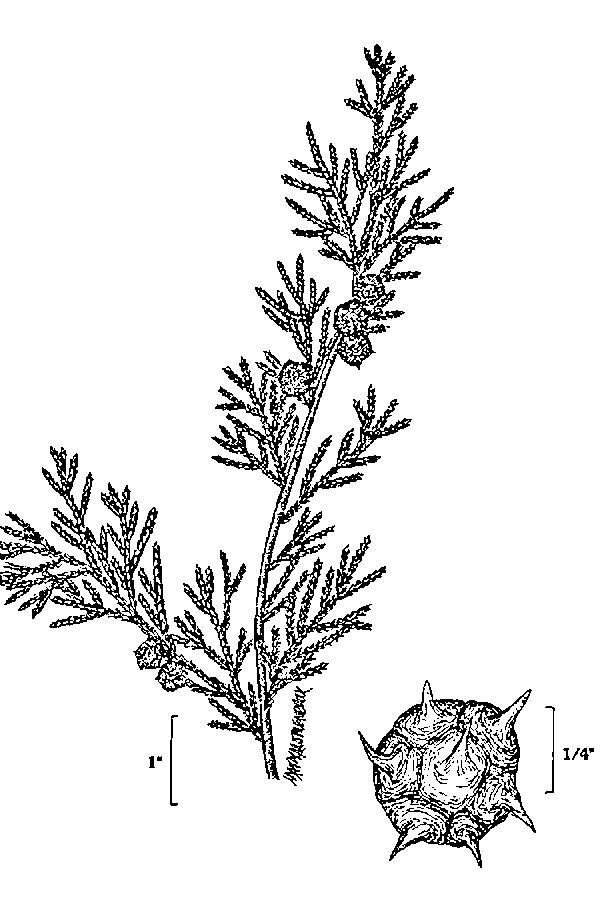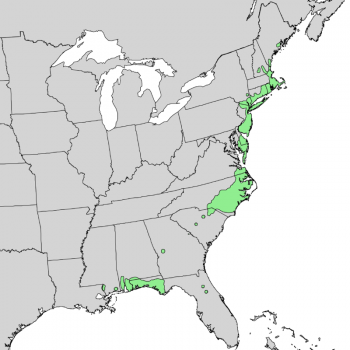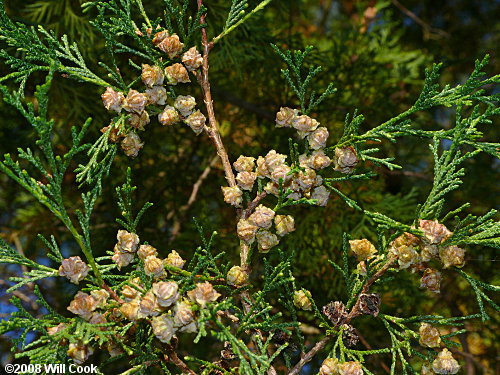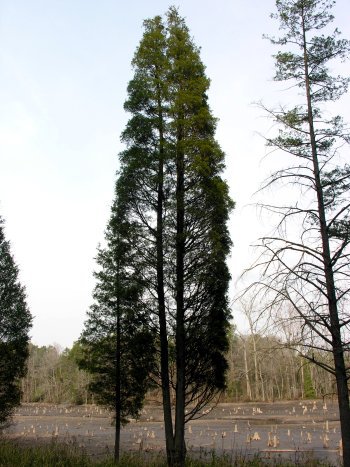
Chamaecyparis thyoides, as described in 1888 by (Linnaeus) Britton, Sterns, and Poggenburg, in Species Plantarum, 2nd edition, is commonly known as Atlantic white-cedar, southern white-cedar, white cypress or swamp cedar. The common name "Atlantic white-cedar" has been rejected by the American Joint Committee on Horticultural Nomenclature, as it is a cypress, not a cedar. However, it is still the most widely used name for this species. It is also spelled "Atlantic whitecedar", combining the words "white" and "cedar" to indicate that the tree is not a true cedar.
There is one subspecies, Chamaecyparis thyoides subsp. henryae, which is sometimes treated as a separate species, Ch. henryae. segregated into the disjunct Gulf Coast populations in Alabama, Florida, and Mississippi.
Description. Atlantic white-cedar is an evergreen
coniferous tree that grows to mature heights of 65 to 90 feet (20 - 28
m), rarely to 100 feet (35 m) tall.

Distribution. This species is native to native to the Atlantic coast of North America from Maine south to Georgia, with a disjunct population on the Gulf of Mexico coast from Florida to Mississippi. It grows on wet sites on the coastal plain at altitudes from sea level up to 50 m, more rarely in the foothills of the Appalachian Mountains at elevations up to 1,500 feet (460 m) above sea level.

